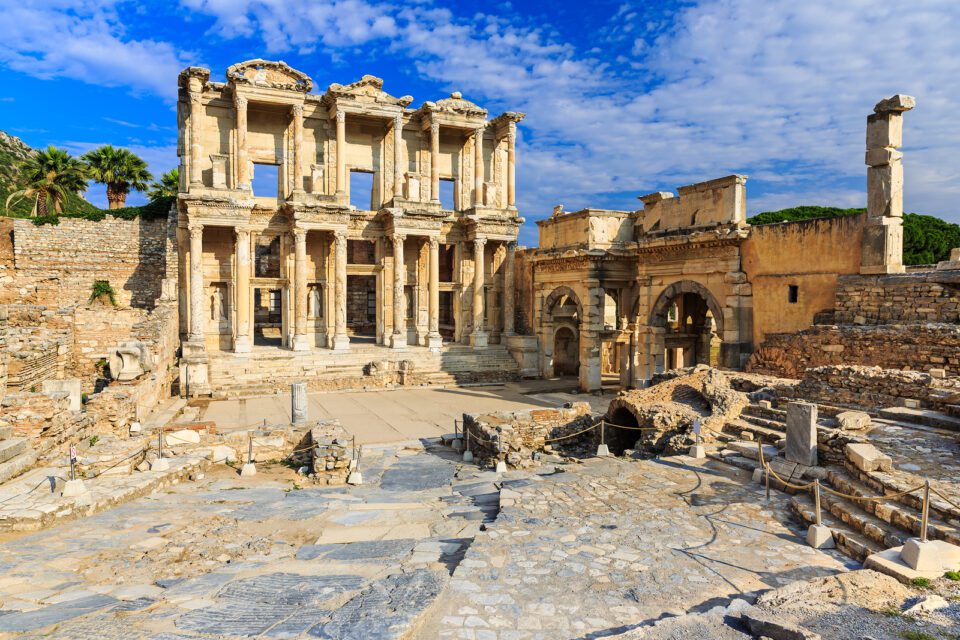If you have long dreamed of visiting the ruins of an ancient metropolis and experiencing the ancient atmosphere, then it’s time to go to the historical complex of Ephesus, Turkey. The unique city-museum, ranked as a UNESCO World Heritage Site, annually gathers travelers from all over the world on its territory. The Temple of Artemis, the Library of Celsus, the House of the Virgin Mary – just a small part of what awaits you in this cradle of antiquity. What is Ephesus, and what sights are spread out on its territory, we consider in our article.
General information
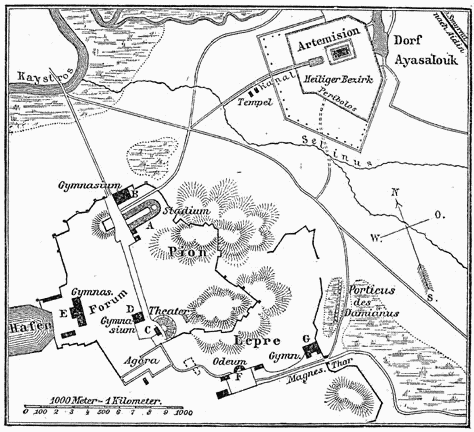
The ancient city of Ephesus is located in western Turkey, 7 km from the Aegean coast and 80 km south of Izmir. It is a historical complex of ancient structures spread over an area of 4.15 square kilometers. For the most part, Ephesus gained fame thanks to the cult of the fertility goddess Artemis, in whose honor a temple was built in the city, later ranked as one of the seven wonders of the world.
Today, the closest settlements to Ephesus are the town of Selcuk, located 3 km to the east, and the resort of Kusadasi, located 17 km to the southwest. The historical complex is considered one of the most valuable attractions in Turkey, which is visited annually by hundreds of thousands of tourists. To make your experience of Ephesus more exciting and informative, let’s take a moment to delve into its rich history.
What to see in Izmir first of all
Historical background
The ancient city of Ephesus in Turkey is located on the territory where the first settlements appeared in the Neolithic era, i.e. approximately in the ninth millennium BC. e. The metropolis itself was founded in the 10th century BC. e. According to legend, its creator was the son of the Athenian ruler Androcles, who fell in love with an Amazon from local tribes named Ephesus during urban planning. According to legend, the city was named after her. It is noteworthy that initially Ephesus was located on the shores of the Aegean Sea, but over the centuries the coast dried up, and the ancient metropolis itself went inland.
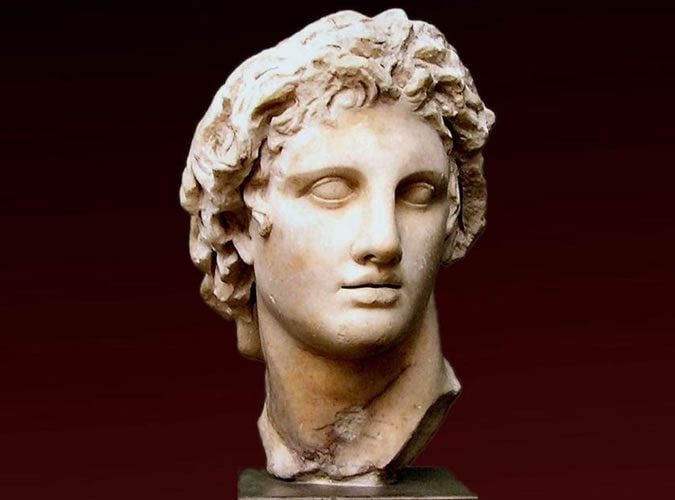
Due to its geographical location, Ephesus quickly became an important port and commercial center, becoming a real treat for conquerors from different parts of the world. In the 6th century BC, the Lydians ruled here, later overthrown by the Persians, who in turn were ousted by the troops of Alexander the Great. During the heyday of the Roman Empire, the city passed to the Romans and was under their protection until the middle of the 3rd century, when the Goths invaded and sacked Ephesus, leading it to absolute decline.
It was possible to restore the glorious city during the reign of Byzantium. At the turn of the 5th-6th centuries. Ephesus became the second most important metropolis of the empire after Constantinople. The Byzantines rebuilt the city and actively used it for commercial purposes. But in the 7th century, the coast of Ephesus began to dry up and gradually filled with silt, which led to the loss of access to the Aegean Sea. As a result, trade completely disappeared, and the city itself lost all significance for the Byzantine Empire.

During the rise of the Ottoman Empire, Ephesus briefly regained its status as a thriving metropolis. The Seljuks who came here built new baths, mosques and caravanserais on the territory. However, in the 15th century, the nearby town of Ayasoluk (modern Selcuk) became more important to the Ottomans, and Ephesus was finally abandoned.
What you can see in Ephesus today
Even with a fleeting glance at the photos of the sights of Ephesus in Turkey, you can understand the scale of this historical complex. In addition to the well-known Temple of Artemis, there are unique monuments of antiquity, many of which have been preserved in excellent condition. What can you see on the territory of modern Ephesus?
Temple of Artemis
Of course, we will begin our description with one of the seven wonders of the world in Ephesus, the temple of Artemis, which today, unfortunately, almost nothing remains. The building was built in the 6th century BC in honor of the goddess of fertility and patroness of all life on earth — Artemis. The construction of the temple took about 120 years. Initially, the structure consisted of 36 huge columns, later expanded by order of the Lydian king Kreisos in the VI century BC.
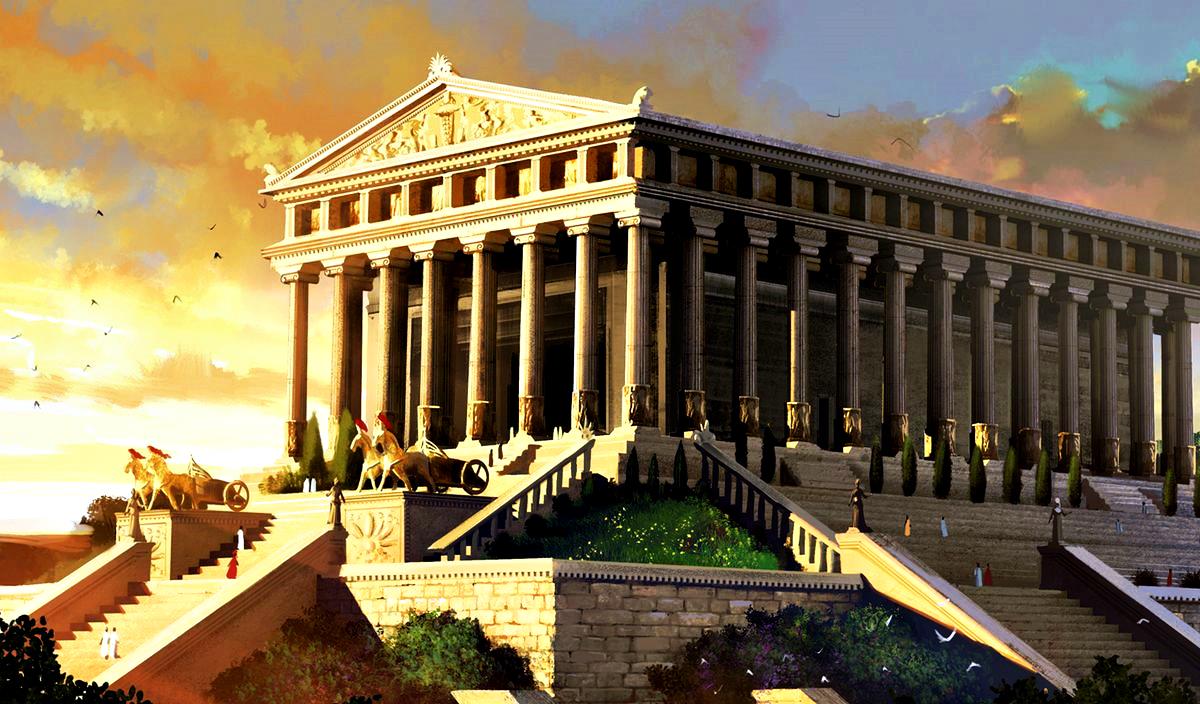
However, this wonder of the world was not destined to live long. Already in the 4th century BC, a madman named Herostratus set fire to the temple of Artemis. As a result, the main part of the structure burned down, from which only the columns remained. In the future, Herostratus explained his act as a desire to write himself in the annals of history, after which he was executed, and his name was forbidden to mention in the annals. During his reign, Alexander the Great tried to restore the temple, but it was soon destroyed by the Goths, and later the sanctuary of Artemis finally fell into disrepair.
The new building of the Temple of Artemis was rebuilt in the II century BC. Located on top of the previous one, it had a colossal size: 125 columns with a height of 17.5 meters each. The length of the temple reached 110 m, and the width – 55 m. Unfortunately, this temple was also destroyed by fire, reconstructed and destroyed again by earthquakes, rebuilt and finally looted by the Goths a year later.
The statue of Artemis was a symbol of the temple, as well as a symbol of abundance, hunting, and wildlife. The original statue of Artemis, removed during the fire, is now on display in the Selchuk Museum. Many copies of this statue were found during recent excavations and belong to the Roman period.

Modern photos of the Temple of Artemis in Ephesus confirm the fact that it was built on a plain that eventually turned into a swamp. That is why the building literally disappeared from the face of the earth, drowning in the abyss over the centuries. Today, all that remains of the structure is a single dilapidated pillar, bored in the middle of a swamp, and a couple of stone blocks in the area. A miniature replica of the Temple of Artemis can be seen in Istanbul’s miniature park, but it is unlikely that it can even partially convey the grandeur of the structure that has sunk into oblivion.
House of the Virgin Mary
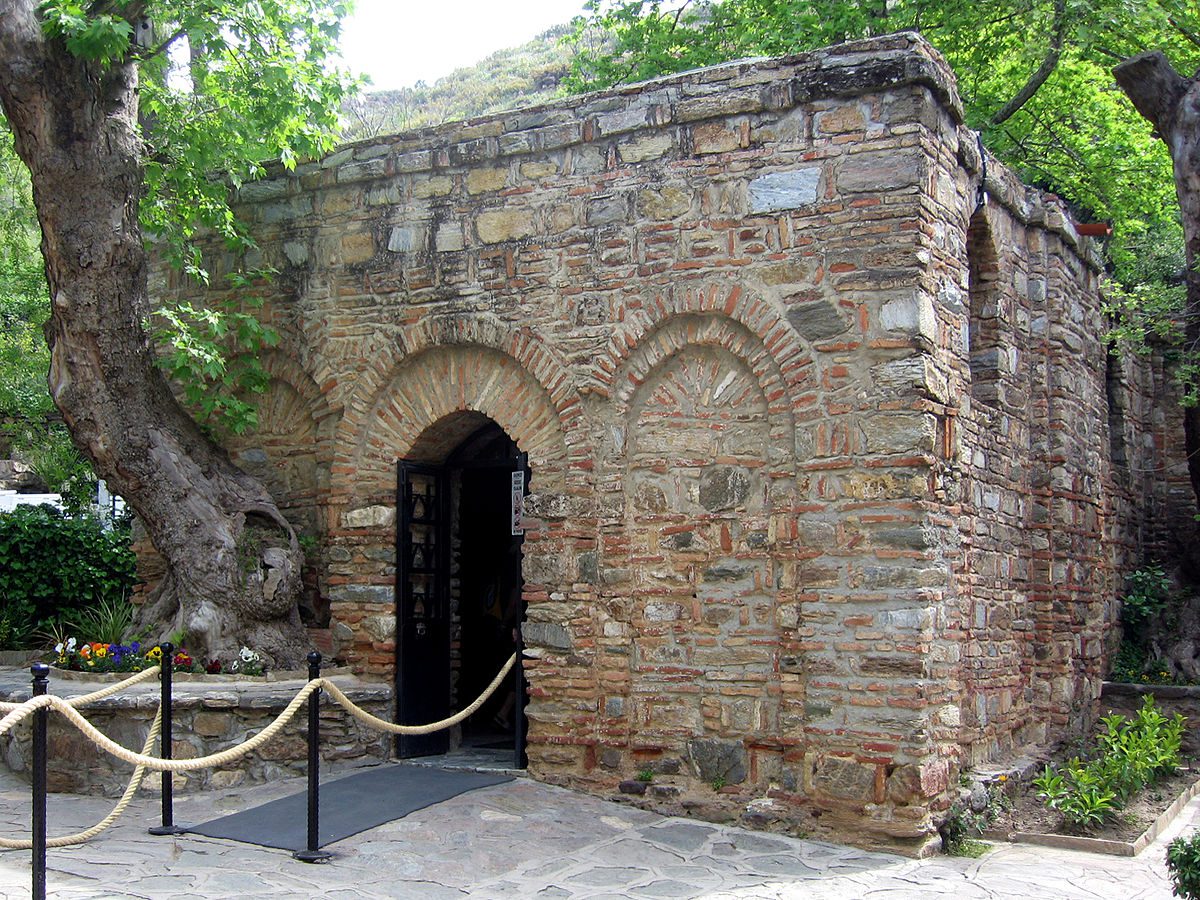
In addition to the Temple of Artemis in Ephesus, there is another historically important landmark – the House of the Virgin Mary. According to the Catholic version, after the ascension of Christ, the Mother of God remained to live in Jerusalem, where she preached Christianity. But there is another version that says that his last years of life (about 9 years) The Virgin Mary spent in Ephesus. Such information arose as a result of the testimonies of a number of local residents, as well as on the basis of a vision that appeared to the German nun A. K. Emmerich at the end of the 19th century.
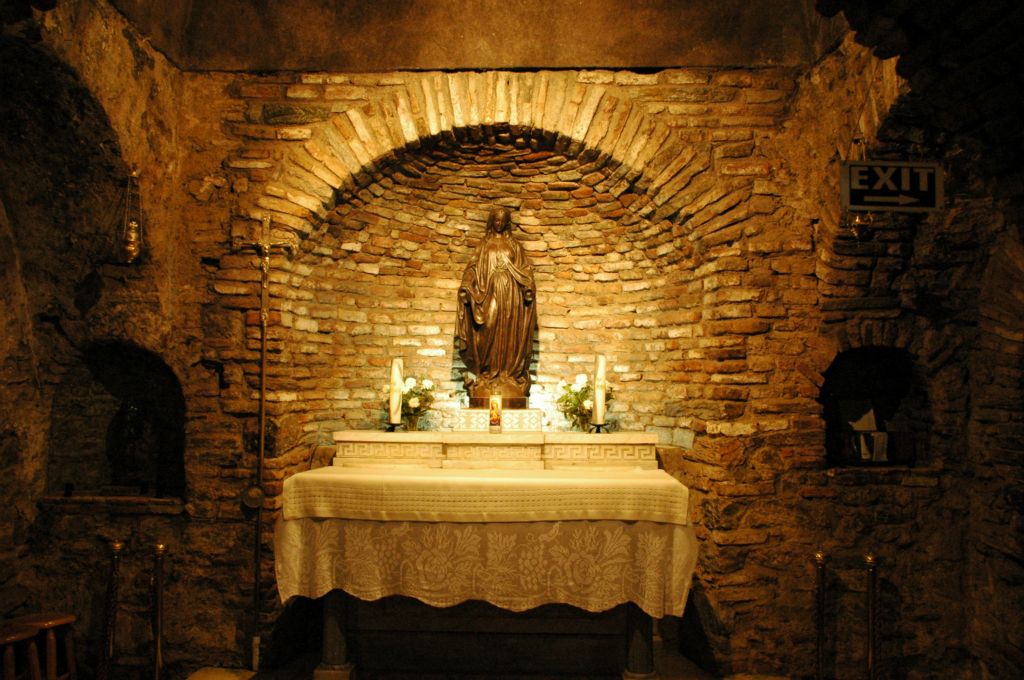
Today, the House of the Virgin Mary in Ephesus is a miniature building, inside which a small basement has been preserved. In the middle of the last century, the building was renovated, and a chapel was built within its walls, where believers from all over the world come to pray. Despite the fact that the Catholic Church officially rejects the version that the Virgin Mary lived in Ephesus, over the past half century, three popes have already visited here.
Theaters
Big Theatre
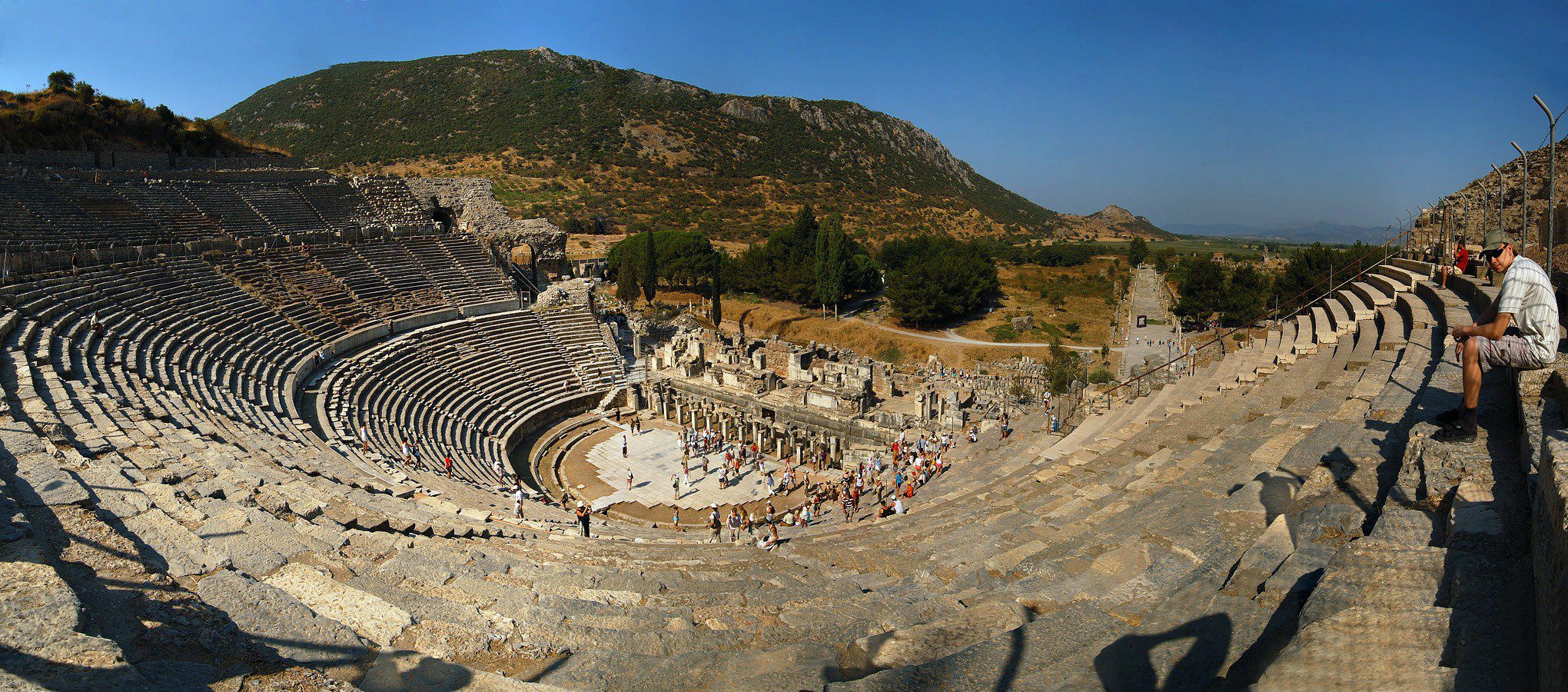
When visiting the House of the Virgin in Ephesus, be sure to check out the Bolshoi Theater and Odeon, which have come down to us in excellent condition. The grandiose three-tiered structure in the form of an ancient Roman amphitheater once held up to 25 thousand spectators, and its upper rows were at a height of 30 m. Today, the height of the building reaches only 18 m, and in total it has 66 rows. In ancient times, the stage of the theater was decorated with carved columns and elaborate sculptures, which, unfortunately, have not survived to this day.
Odeon
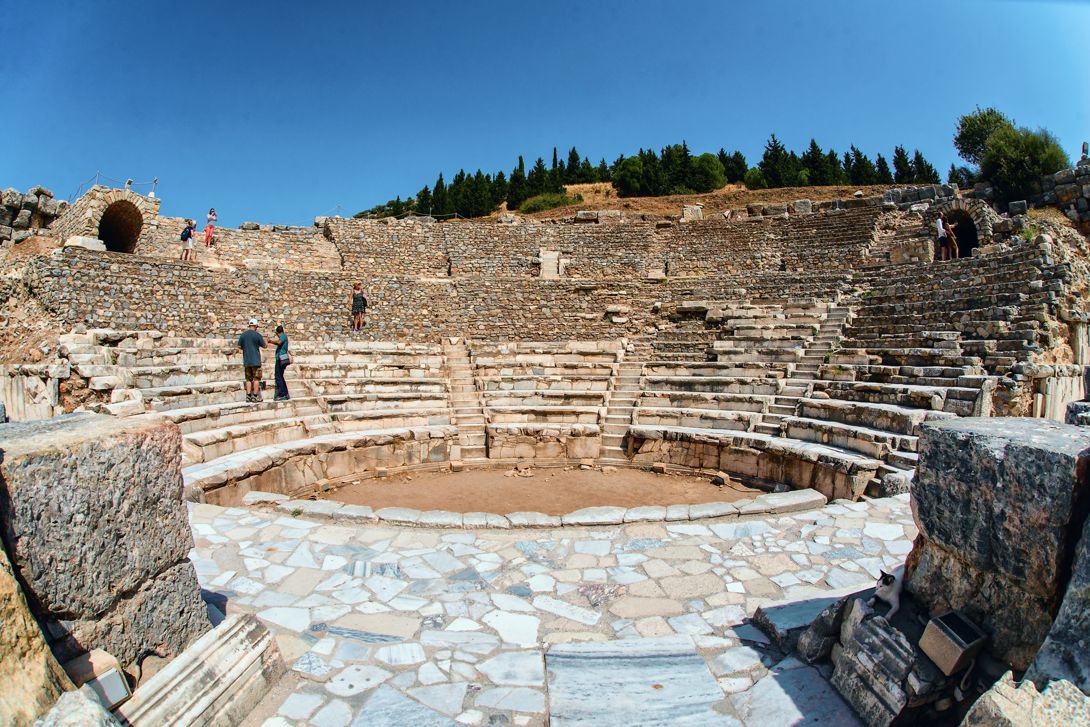
In Ephesus there is another theater of much smaller scale, but no less interesting – the Odeon. It is designed for 1,500 people and is a two-tiered semicircular structure divided into four sections, cut off from each other by stairwells. As a rule, in ancient times buildings of this type were used for singing events, but this theater primarily served for meetings of the Senate, in between which theatrical performances were held here.
Celsus Library
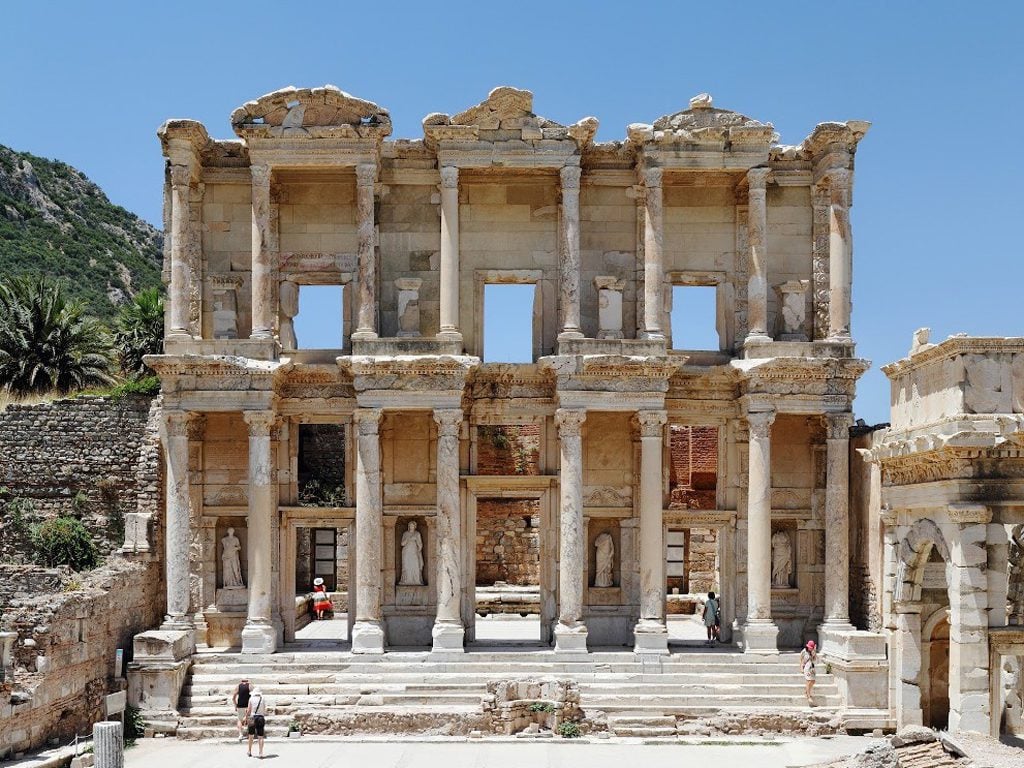
Among the sights of Ephesus, special attention should be paid to the ruins of an outstanding architectural monument of the Roman Empire. This is the Celsus Library, built in the early 2nd century during the heyday of Rome. The author of the structure was the architect Tiberius Julius Aquila, who named it after the highly educated statesman Celsus, who was his father. The library was not only a repository for more than 12,000 scrolls, but also a tomb for Celsus himself. During excavations conducted in Ephesus in the early 20th century, archaeologists managed to find a marble tomb with the remains of a once famous Roman.
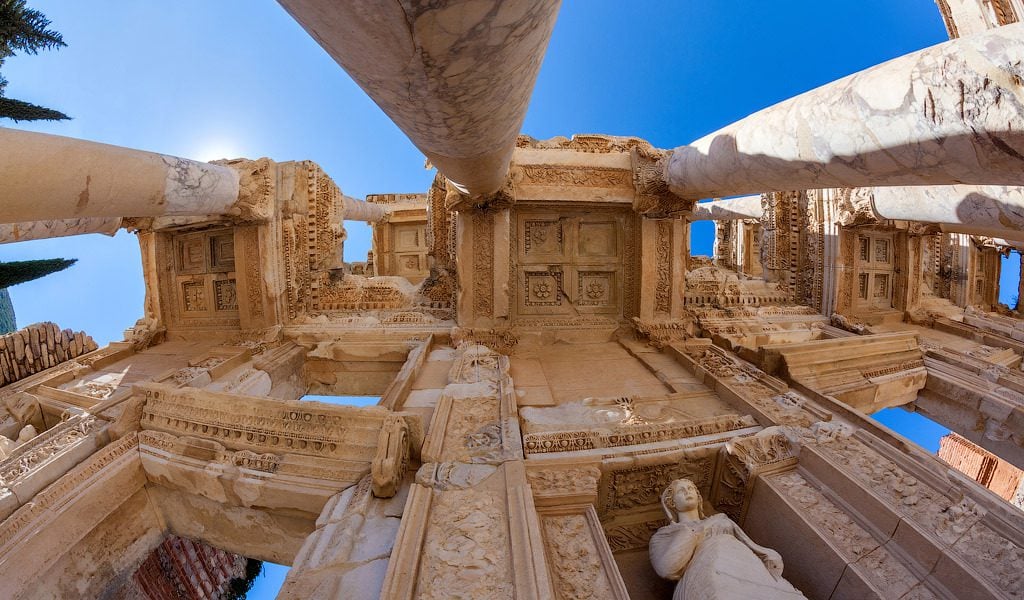
But, like the temple of Artemis in Ephesus, the library of Celsus did not manage to survive to this day due to the invasion of the merciless Goths, who burned the building almost to the ground. Only the facade of the building remains, but it was also destroyed in an earthquake during the Byzantine Empire. The remains of the library that we see today are only a reconstruction of the building, which was recreated from the preserved ruins. Currently, you can see the two-story facade with columns, the space between which is decorated with four sculptures of women, symbolizing Virtue, Wisdom, Knowledge and Thought. But these statues are only copies, and the originals are now kept in the Vienna Museum.
Other attractions
Other attractions of Ephesus in Turkey include::

- Basilica of St. John the Evangelist, built in Byzantine times
- Ruins of the ancient Agora, a market square once decorated with colonnades
- The Temple of Domitian, in the ancient period decorated with 21 columns and sculptures, of which today only ruins remain
- Terraced houses — former dwellings of wealthy citizens: their peculiarity was that each house served as a terrace for the next; in many buildings frescoes and mosaic floors were preserved.
- Temple of Hadrian, built in honor of the Roman emperor and once decorated with colonnades, arches and sculptures of other rulers
- Kuretov Street, once paved with marble and decorated with statues and columns
Opening hours and ticket prices
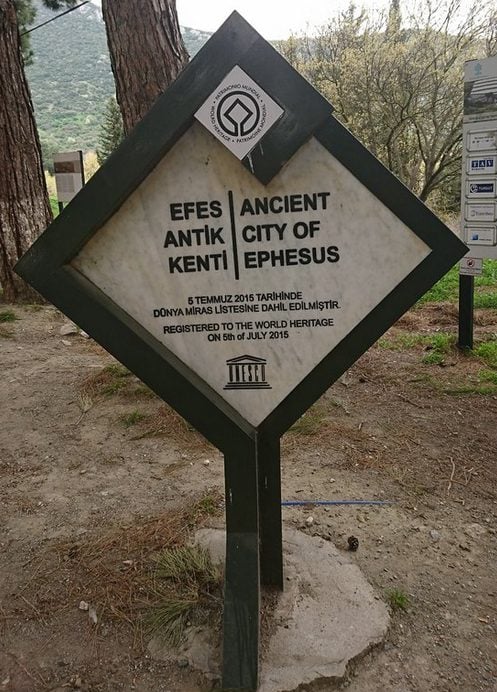
The historic Ephesus Complex in Turkey is open daily. During the period from April 15 to October 2, the attraction is open from 8: 00 to 18: 30, from October 3 to April 14 – from 8: 00 to 17: 00.
- The entrance fee is $9 in local currency. If you are a museum card holder, admission is free.
- Access to the terrace houses, St. John’s Basilica and the Archaeological Museum is charged separately: the ticket price varies from $2 to $3, depending on the attraction.
- You can also buy an audio guide for $5.
Entrance tickets are sold at ticket offices and self-service terminals.
Useful tips
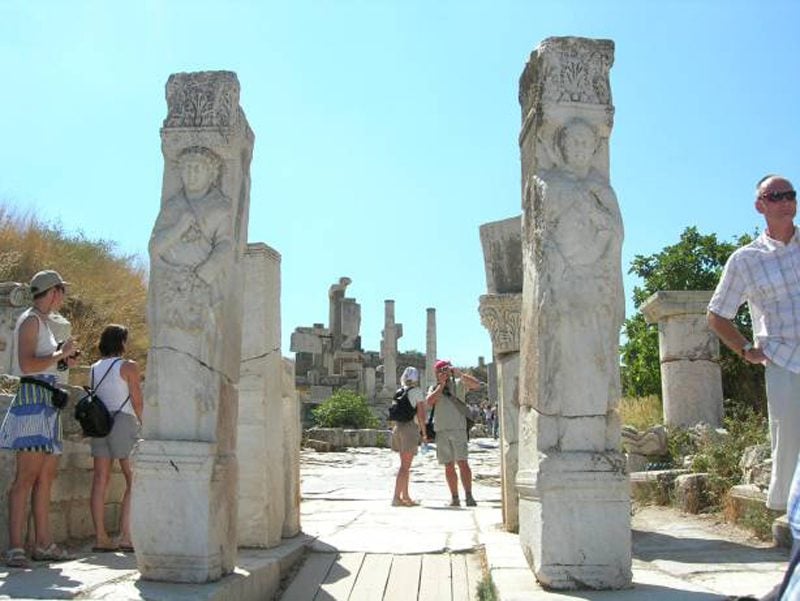
Many travelers have already visited the city of Ephesus in Turkey and did not skimp to share useful recommendations, taking into account which, you can organize the most comfortable tour of the ancient complex.
- It will take you at least 3 hours to get acquainted with the most interesting places in the city.
- It is best to go to the complex closer to the opening, as during the day you can find unbearable heat, and shade among the ruins is very difficult to find.
- If you decide to go to Ephesus in the high season, be sure to bring a hat, sunscreen and water.
- When visiting the Bolshoi Theater, tourists recommend climbing to the topmost rows, which offer spectacular views of the city.
- If you can’t make it to the attraction in the morning, we recommend that you visit it closer to 16: 00. At this time, it is not so hot, and people become much less crowded.
- Many travelers recommend hiring a professional guide or purchasing an audio guide. In this case, your tour will be as interesting and informative as possible.
- If you want to save money, then go to Ephesus yourself, and not with a travel agency. Otherwise, you risk overpaying at least three times.
- Since there are so many attractions on the territory of the complex, you will need a full charge on your camera (phone) to capture all these unique objects.
- Take everything you need with you (wet wipes, batteries, sunglasses, etc.), because there are no shops on the territory of the ancient city, and shops at the entrance sell goods at an exorbitant price.
How to get to Ephesus
The most convenient way to get to the city of Ephesus in Turkey is from nearby settlements-the towns of Selcuk and Kusadasi. Ephesus is located 3 km west of Selcuk, and you can get here by Dolmush from the city’s bus station. The journey takes no more than 10 minutes. The cost of the trip is $0.5.

If you are staying in the Turkish resort of Kusadasi, located 17 km south-east of Ephesus, then the road to the complex will take you about half an hour. You can get to the ancient city by dolmush, following the Kusadasi-Selchuk route, which departs from the city’s bus station several times per hour. The fare is $1. In this case, you need to warn the driver that you are going to Ephesus, and get off dolmus at the turn with the sign “Efes”. Then you just need to cover 1 km on a straight road to the complex.
Of course, you can get to the ancient city by taxi, or by rented car, or book a guided tour. But all these options are much more expensive. Although it is up to you to decide which ways to get to Ephesus, Turkey, will be most suitable for you.

